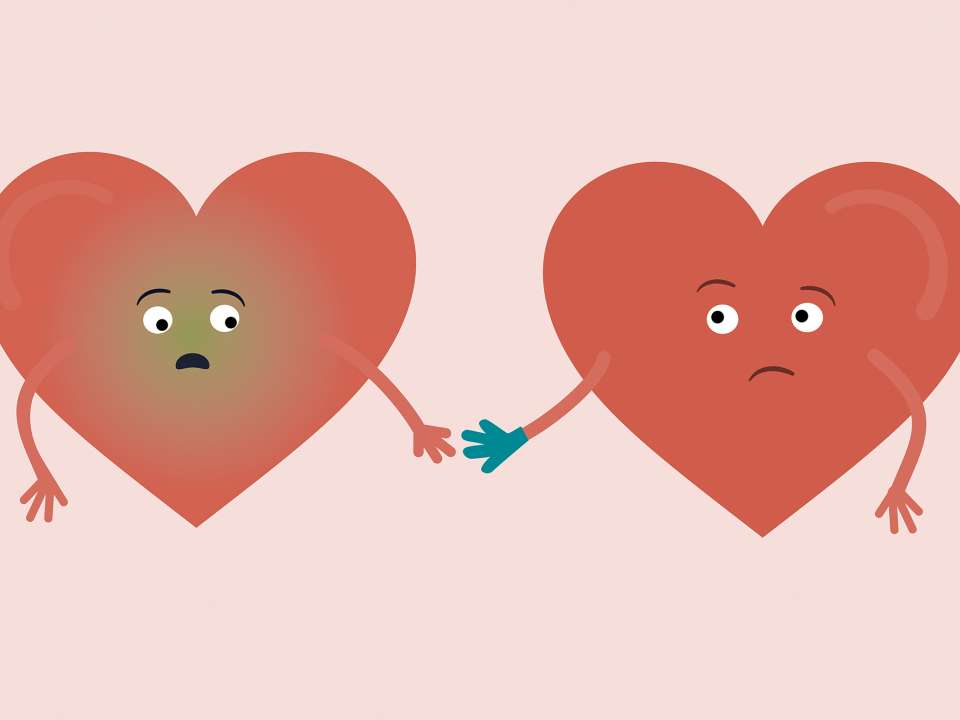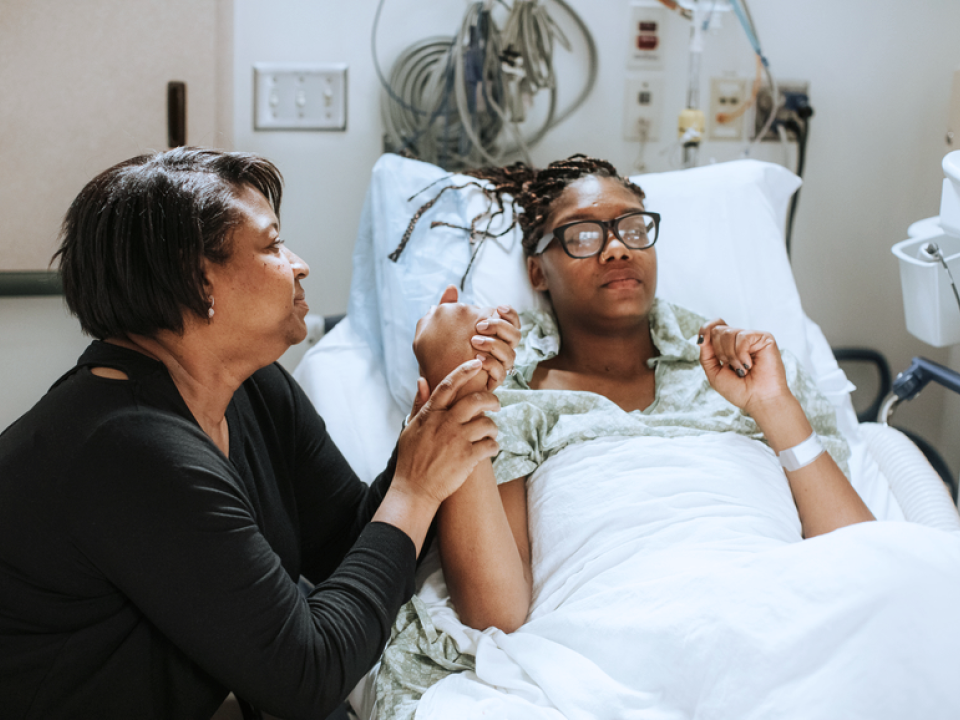What You Should Know about the Latest Cervical Cancer Screening Guidelines

If you have a uterus, keep on reading.
Remember those slightly awkward visits to your gynecologist every few years to get your Pap test? Well, now you might be able to space that awkwardness out a bit.
The United States Preventive Services Task Force, a panel of clinical experts that reviews medical practices, recently updated the cervical cancer screening guidelines that affect how frequently some of us need to get tested.
Currently, there are two ways to check for cervical cancer. One is the traditional Pap smear — a swipe of your cervix with what looks like a long-handle brush or spatula — to identify abnormal cells that could morph into cancer. The other is a high-risk HPV test, or hrHPV test for short. This option uses that same brush but instead checks for 13 to 14 different types of human papillomavirus (HPV) that are known to cause cancer.
TL;DR version: A Pap smear identifies cervical cells that have the potential to become cancerous, while the hrHPV test detects the virus that could make those cells go bad in the first place.
That’s not the only difference. Although both tests are useful, the Pap is actually less effective at detecting cervical disease than the more-sensitive hrHPV test.
“We know the Pap smear is really only about 50 percent sensitive,” says Constance Mao, M.D., an associate professor in the University of Washington School of Medicine’s Department of Obstetrics and Gynecology. “The HPV test is about 98 percent sensitive.”
How do you get HPV to begin with? That would be our favorite culprit: sex.
HPV is the most common sexually transmitted disease out there. (And, sorry, using condoms can’t prevent an HPV infection.) Both women and men can give and get the virus from doing the deed itself, as well as simple skin-to-skin contact of the genitals, mouth or fingers. There are actually more than 100 different kinds of HPV and — here’s the scary-sounding part — you probably have it.
Breathe easy. It’s very common to have HPV, notes Ashima Singla, M.D., F.A.C.O.G., an OB-GYN physician at the Women’s Health Clinic at Mill Creek.
In essence, you could be infected with HPV and then get over it just like you would a cold. It’s really only those 13 or 14 high-risk types of HPV that are cause for concern — and only when the infection persists.
The same goes for men: they’re just as susceptible to getting HPV as we are and can also recover without medical intervention. HPV-related cancers are less common in men, but the virus can still cause cancer of the throat, anus or even penis.
But back to those new guidelines and what they mean for you. It all depends on your age and the type of screening test you receive.
If you’re younger than 21
You don’t need either test, according to the latest guidelines, even if you’ve had sex. The principal reason here is that young women between the ages of 15 and 19 have a very low risk of invasive cervical cancer — a rate of 0.15 per 100,000 people.
In fact, not getting tested helps prevent potential overtreatment, which can lead to a weakening of the cervical tissue called incompetent cervix that causes miscarriage or pre-term birth, not to mention costly lab work and any anxiety you may have over that visit to the gynecologist’s office.
“Delaying the start of cervical screening does not have an overall effect on the incidence of cervical cancer,” Singla says. “It reduces the number of biopsies on lesions, reduces emotional and physical discomfort and reduces the risk of overtreatment.”
But that doesn’t mean you’re completely off the hook. Everyone, regardless of gender, should still receive an HPV vaccine, even if you’ve had sex, Mao says. It’s been available since 2006 and is taken as a series of two or three shots, depending on how old you are when you get the first dose. People between the ages of 9 and 45 should get vaccinated.
The vaccine covers seven of the 13 to 14 versions of cancer-causing HPV, plus two noncancerous types that cause genital warts. According to Mao, if the vaccine works perfectly, it has the potential to protect against 85 to 90 percent of all cervical cancers.
If you’re between the ages of 21 and 29
Once you turn 21, you should start getting Pap tests every three years, whether you’re sexually active or not.
Why just the Pap test and not the hrHPV test?
Women this young still have a high presence of transient HPV, Singla says, meaning you may have an HPV infection that your body will eventually fight off on its own. Relying on the Pap smear alone for this age group prevents overtreatment and complications associated with treatments. You may need to get an hrHPV test, though, if the Pap smear shows a mild abnormality, Mao notes.
If you’re between the ages of 30 and 65
Women who fall in this age range have a few different options, according to the guidelines. You can have a Pap smear every three years, an hrHPV test every five years or both tests — known as cotesting — every five years.
According to a study of cervical cancer in women 40 and younger, those between the ages of 30 and 39 accounted for a staggering 78 percent of the cancer cases. Some of that might be attributed to the lack of a vaccine when some of these women were younger, hence the introduction of the more-sensitive hrHPV test for this age group.
Still, it all depends on what is available and recommended by your gynecologist. Regular screenings, no matter the testing method, are better than no testing at all, Singla notes.
If you’re older than 65 or had a hysterectomy
Say bye forever to that long-handle brush if you’ve had at least three normal Pap smears or two normal hrHPV tests in the past 10 years, with your most recent test within the last five years.
According to the new guidelines, cervical cancer is so rare in this age bracket that the harms of testing actually outweigh the benefits. And if you’ve had your uterus removed (a hysterectomy) for reasons unrelated to cancer, then you’re also free and clear.
That said, if you’ve had cervical cancer before, precancerous lesions or a sporadic screening history, you should consult with your gynecologist before you stop getting screened altogether.
Additional ways to lower your risk
Aside from receiving the vaccine, getting screened for cervical cancer at regular intervals and maintaining your annual gynecologist visits, Singla makes another recommendation: Don’t smoke.
“Smoking harms all of the body cells, including the cervical cells,” Singla says. “If you smoke and you have HPV, you have a higher chance of getting cervical cancer. Patients who smoke come to me all the time, and they say, ‘I don’t know why my HPV keeps on coming back again and again.’ If you stop smoking, your body will have immunity to get over it.”
And while limiting your number of sexual partners reduces your risk of getting HPV in the first place, you don’t need to get retested if you get down with someone new.
“The way that women should interpret these guidelines is that it’s a conversation to have with their provider to see what test works best for them,” Mao says. “We expect that these recommendations will continue to change over time as the vaccine helps to protect more women against cancer.”
Editor’s note: This article was originally published October 5, 2018. It has been updated with additional information on October 8, 2018.

 Healthy ideas for your inbox
Healthy ideas for your inbox





